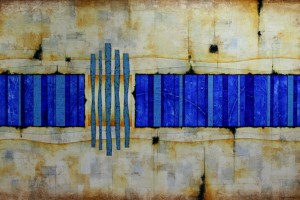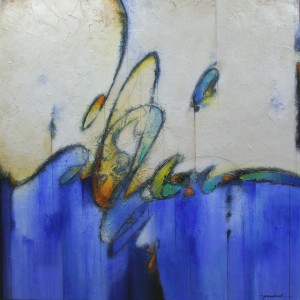Welcome, readers, to the February 2013 issue of Synchronized Chaos! This month, our contributors are going to take you on a journey into the past: we’re presenting a number of pieces which examine bygone days—ranging from personal histories to ancient events to recent incidents to past artistic genres—and tell us something about their connection to modern times. Let’s examine what our authors and artists have to say on the topic…
Poet Shelby Stephenson opens the issue with a pair of eye-catching excerpts from two longer works. Each one takes the events of the past and makes them resonate in a modern context: “Country” draws upon the popular culture of the 1950s and ‘60s and the giants of the country music genre, while “Nin’s Poem: A Bipolar Memoir” takes a more personal turn, drawing on memories of love, education, and historical milestones to weave together a compelling tale.
Personal reminisces are also the subject of Cristina Deptula’s poems in this issue. Cristina, a longtime editor for Synchronized Chaos, contributes “Gordon’s Airplane” (inspired by a family friend who was a private pilot), “Harmony with Nature” (a humorous look at the dichotomy between modern technology and the natural world), and “Wise Construction” (a soul-searching look back at the flaws of past actions).
Regular poetic contributors Linda Allen and Sam Burks both contribute a variety of excellent pieces this month. “David and Goliath,” one of four poems by Linda in this issue, looks back to a traumatic childhood event to tell a story of religious faith and survival in a life-threatening situation. Meanwhile, several of Sam’s poems address the past and its connection to the present: “Your Body Is the Missing Season” describes a past relationship in evocative terms, “The 29th” deals with the passage of time, and “Tomorrow” examines both the present and the future through the lens of the past.
Other exceptional poems come from Teri Louise Kelly, whose “Spore Suite” deals vividly with the brutal consequences of love, life, and relationships past and present, and Tatjana Debeljacki, who contributes four pieces, several of which focus on the pain of the here and now but look towards a more hopeful future.
With his essay “Pilgrimage to Wounded Knee,” Jeff Rasley moves us into a different type of history: incidents which occurred long ago but nevertheless retain all their relevance today. In his piece, Jeff discusses his family’s connection to one of the most shameful events of America’s past and describes how a recent trip to South Dakota helped illuminate some of its modern-day repercussions.
Janine Canan’s poem “Crucifixion of a Woman” deals with an event in the more recent past, but one which is no less significant or problematic. It’s just the first of a set of six “Poems from India” by Janine which range from real-world events to evocation of memories to pieces of abstract beauty.
This issue also includes reviews of three recently-published books. Each one is well worth a read, and each has a significant connection to the past. In Brant Waldeck’s children’s novel The Secret of the Portals, covered here by Bruce Roberts, the link is a stylistic one: the book hearkens back to the epics and swashbuckling adventures of bygone days. Bruce also reviews Windham’s Rembrandt, Jonathan R. Humphries’ depiction of his father’s experiences as an art teacher in the Texas prison system, and ponders upon some illuminating connections to his own past. Meanwhile, Elaine Starkman’s poetry collection Hearing Beyond Sound engages with the past in yet another way: as reviewer Deborah Fruchey explains, it is specifically designed to evoke the memories of old age, and it is filled with references to historical events both personal and political.
Speaking of the world of writing, this month’s installment of Leena Prasad’s column Whose Brain Is It deals with an effect which good stories have had on their readers since the distant past, and which they’ll continue to have as long as they exist. “World of Words” describes the brain’s ability to create vivid mental pictures of the action occurring in stories, and we predict that this experience will be a familiar one to our readers!
In his essay “The Climate War,” Randle Aubrey takes a look at the destructive tactics used by Exxon, Shell, and other major fossil-fuel-dependent corporations. Addressing both the past (the history of questionable practices employed by these companies) and the future (the methods needed to combat them), he makes a compelling case for social reform. A further take on the climate change comes from Dr. John J. Berger, interviewed in this issue by Cristina Deptula; comparing present weather conditions to those of the past, Dr. Berger paints a disturbing picture, but he also creates hope for the future in the arena of renewable energy.
The technology of a much more distant past is referenced in the piece at the top of this post: it’s titled “Aqueduct” after one of the most revolutionary inventions of the ancient world. It, as well as five other superbly-crafted abstract pieces by artist Mark Yearwood, can be found here.
We hope you enjoy this month’s issue of Synchronized Chaos! As always, please feel free to leave comments for the contributors; if you’re interested in submitting some of your own work for the magazine, please send it over to synchchaos@gmail.com.



Thanks so much for featuring my art in S.C. this month! – Mark